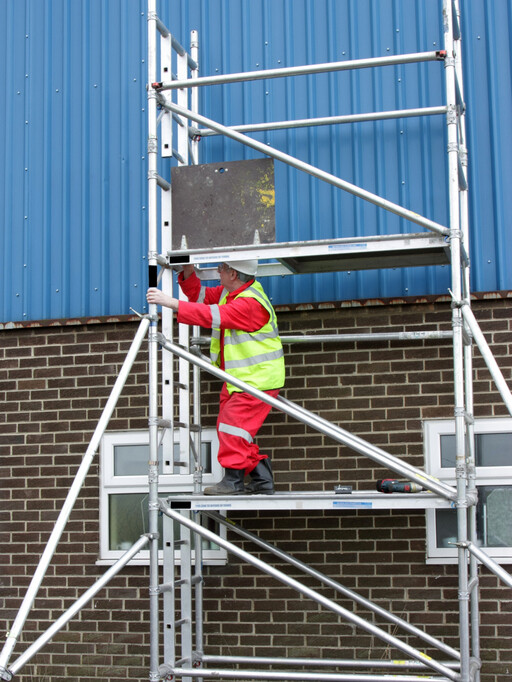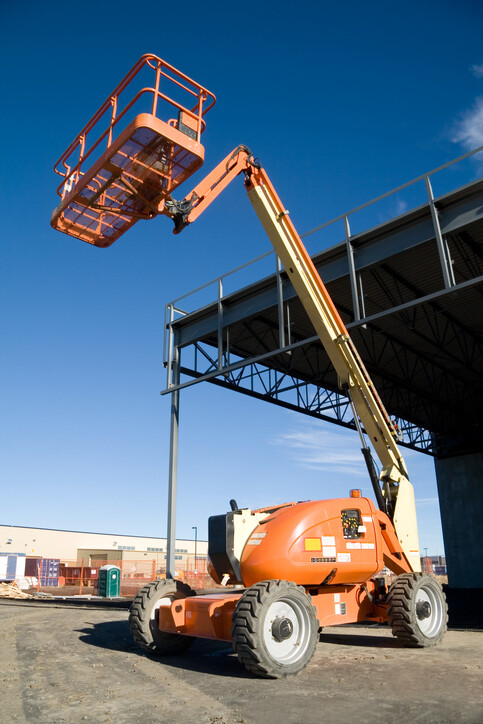 What's Best for Each Project?
What's Best for Each Project?
The vast number of possibilities available when hiring or purchasing access equipment can be daunting, especially with new developments such as PAVs (push-around vertical lifts) or spider lifts. With so much to choose from, deciding on the safest and most suitable equipment for a project can be complicated. Fortunately, help is at hand.
If you’d like a clearer idea of all of the current options in access equipment on the market as well as the scenarios in which this equipment is used, read on. In this article we will provide you with all of the information you need, as well as some tips to help you make the right decision. At Drogheda Hire and Sales, we offer a range of manual and powered access equipment throughout Ireland. Don’t hesitate to get in touch for more information.
Helpful Categories
Access equipment can be divided into powered and manual access. Powered access equipment refers to machines that have motors such as boom and scissor lifts, and manual access refers to ladders, podiums and access towers.
Furthermore, access equipment can be categorised based on other features, such as the type of access it is able to provide. For example, a ladder can provide vertical access, while a boom lift can provide horizontal access as the boom can swing from one side to the other.
Types of Manual Access Equipment:
Manual access equipment comes in various forms designed with the place that needs to be accessed in mind. A ladder that might be useful for accessing a roof might not be useful for accessing the ceiling indoors. In this section we’ll explore the different types of manual access solutions available.
- Pole ladders: Pole ladders or straight ladders are classic single piece ladders without adjustable length. While for some jobs this might be a disadvantage, it can also be an advantage as it does not require a lot of set up. As these do not have any built in support features, they must be against a wall or another solid structure. A Youngman timber pole ladder is ideal for roofing or exterior repairs.
- Extension ladders: Extension ladders are similar to pole ladders, only made up of various sections which extend to provide extra length. A Lyte Industries C Section triple extension ladder can reach an impressive height of 13m. Just like a pole ladder, it has to lean against a solid structure for support.
- Roofing ladders: Roof ladders are extensible or single piece ladders with a hook at the end that holds onto the opposite side of a pitched roof. They often feature wheels that allow them to be rolled into position, preventing damage to the roof. They can then be turned over and hooked into place. Aluminium roofing ladders like those manufactured by Lyte Industries allow a worker to move up and down the pitch or slope of the roof and are ideal for roof repairs, chimney repairs or satellite installations.
- Step ladders/folding ladders/platform ladders: Step ladders or folding ladders are freestanding with an A-shaped design, flat steps and sometimes a work platform at the top. Since they stand on their own and require no additional support they are ideal for working in areas away from any supporting walls, such as on ceilings. Not all step ladders have a platform at the top, and those that do are sometimes referred to as "platform ladders".
- Podium ladders: A combination of a step ladder and podium steps, podium ladders are designed to open in an A shape. Being free standing ladders with guardrails, they provide greater comfort for changing orientation while working.
- Podium steps: Podium steps are similar to step ladders but distinguished by a caged platform. They often feature stabilisers and come in various designs, including for staircases.
- Access Towers: Mobile access towers are prefabricated scaffold towers that are easy and quick to assemble. Unlike traditional scaffolding, they are mobile and do not need to be anchored to a wall, making them a much more convenient alternative for a lot of jobs. Many models are available, such as the BoSS Solo 700 designed to be assembled by one person, or the BoSS Evolution Ladderspan, with a maximum platform height of 6.2m.
 Types of Powered Access Equipment:
Types of Powered Access Equipment:
Powered access equipment has a number of applications. Some machines are designed for indoor use while others are ideal for outdoor use, and while powered access machines usually provide the possibility of reaching great heights, some machines such as PAVs (push-around vertical lifts) are designed for access at lower levels. In this section we’ll explore the various options.
- Push-around vertical lifts (PAV): Push-around vertical lifts (PAVs), or personnel lifts, are manual access platforms that use mechanical power. Machines such as the Power Tower Ecolift are designed to be manually positioned and raised from inside the platform using a wheel, offering a working platform of up to 2.2m. Sometimes, PAVs blur the boundaries between manual and powered access with machines like the battery powered Power Tower Nano SP, which provides a 3.1m working platform.
- Boom lifts: Boom lifts are telescopic or articulated self-propelled aerial work platforms. The telescopic design uses a straight, extendable arm for vertical access, while an articulated design like this JLG 40.3m boom lift utilises multiple hinged sections to reach over obstacles. Both types normally use hydraulic systems for boom extension.
- Cherry pickers: The terms "cherry picker" and "boom lift" are often used interchangeably. However, some users make the differentiation that cherry pickers are not self propelled and are usually mounted on trucks, vans or trailers like this Niftylift 170. These machines consist of a bucket or platform attached to an articulated arm offering vertical and horizontal reach as well as access over obstacles. Furthermore, trailer-mounted cherry pickers are equipped with outriggers for support.
- Spider lifts: These machines are similar in principle to cherry pickers, only that theta are tracked and have been specifically designed to be compact enough to navigate through tight access points. These lightweight machines can operate on surfaces with weight restrictions, manoeuvre on rough terrain and be assembled in awkward positions thanks to their articulated outriggers. Machines like the Hinowa 20.1m spider lift provide extra stability for reaching heights.
- Scissor lifts: Scissor lifts are access platforms used to raise workers and equipment vertically. They consist of a platform supported by crisscrossing metal arms, or scissor mechanisms, which extend and retract to raise and lower the platform. Scissor lifts like the Skyjack 3226 that are driveable at full height are perfect for jobs that require horizontal access, as they can be driven along a wall that is being painted or plastered, or beneath a ceiling for M&E installations.
- Vertical mast lifts: Designed to navigate tight spaces in warehouses or office buildings, vertical mast lifts are compact and utilise a single mast that extends vertically. They can reach impressive heights, with the Genie AWP-30S reaching 10.8 metres.
Things to consider when choosing access equipment:
There are a number of factors to consider when choosing access equipment, including where the project will take place, the terrain, obstacles that might be in the way, project duration, amongst others. In this section we’ll review some essential information for making an informed decision.
- Indoors vs Outdoors: One thing to consider when choosing access equipment is whether you will be working indoors or outdoors. Emissions from working indoors or in enclosed areas with diesel or petrol machines can pose a serious health hazard. For this reason, the best options are electric powered access machines and manual access equipment, which have the added advantage of being quiet. When working outdoors, on the other hand, there are a number of factors to consider such as the type of terrain and wind speed, as access tower and scissor lifts can be toppled by wind.
- Terrain and Location: When working in mud or on uneven ground, tracked or wheeled rough-terrain machines provide the best solution. Furthermore, fuel sources such as diesel and petrol are preferable when working in areas with no access to electricity for charging. Most outdoor jobs are not carried out in the mud however, but on the road or roadside, which although paved may not be an even surface. This means ladders may be difficult to position. Access towers, boom lifts and cherry pickers are better adapted in these cases.
- Obstacles and Type of Access: While some equipment (such as ladders or scissor lifts) is designed to provide vertical reach, other types of equipment provide horizontal reach or reach over obstacles. An articulated boom lift or cherry picker, for example, provides horizontal reach as the boom is able to move from side to side, as well as upward reach and reach over obstacles that might be in the way. A boom lift that is not articulated (a telescopic boom lift) on the other hand, can only provide vertical and horizontal reach, and is not suitable for working over obstacles. Furthermore, it is important to consider the height that is being accessed. While access towers can’t generally be constructed for access exceeding 12 metres, traditional scaffolding and powered access platforms can reach much higher.
- Project Duration: The choice of equipment used for a project depends in part on the duration of the project. For making a small repair on a wall fixture, an extension ladder might be enough. For repointing a brick wall with new mortar on the other hand, an access tower might be a better option. While it takes longer to set up, the convenience offered by its ample space will make it a worthwhile choice.
- Materials: Aluminium and other conductive materials heat up in the sun and get cold in low temperatures, sometimes making them uncomfortable to work with outdoors. Furthermore, they conduct electricity, increasing the risk of electrocution when carrying out electrical work. Wood and fibreglass, on the other hand, are not affected by temperature changes as much and do not conduct electricity well.
With the right knowledge about access equipment and insight into the various factors to consider for a job, you can ensure a successful project.
Choose Drogheda Hire and Sales for Access Equipment Hire
At Drogheda Hire and Sales, we stock a wide range of manual and powered equipment, as well as other machinery available for hire. If you would like to speak to us about hiring or buying any of our equipment for your project, don't hesitate to get in touch; we'll be more than happy to assist you.
Call us on 0419841419 for our Drogheda depot or on 01 9108757 for our Dublin depot, use our contact form or try our Enquiry Bot at the bottom left hand corner of our home page.
